BBC Earth newsletter
BBC Earth delivered direct to your inbox
Sign up to receive news, updates and exclusives from BBC Earth and related content from BBC Studios by email.
Animals
Elephants have the longest pregnancy period of any living mammal.
If you – or someone you know – has experienced a pregnancy that seemed to go on forever, spare a thought for the elephant. It’s the animal with one of the longest gestation periods of all living mammals: nearly two years.
So, let's talk about the elephant in the womb...
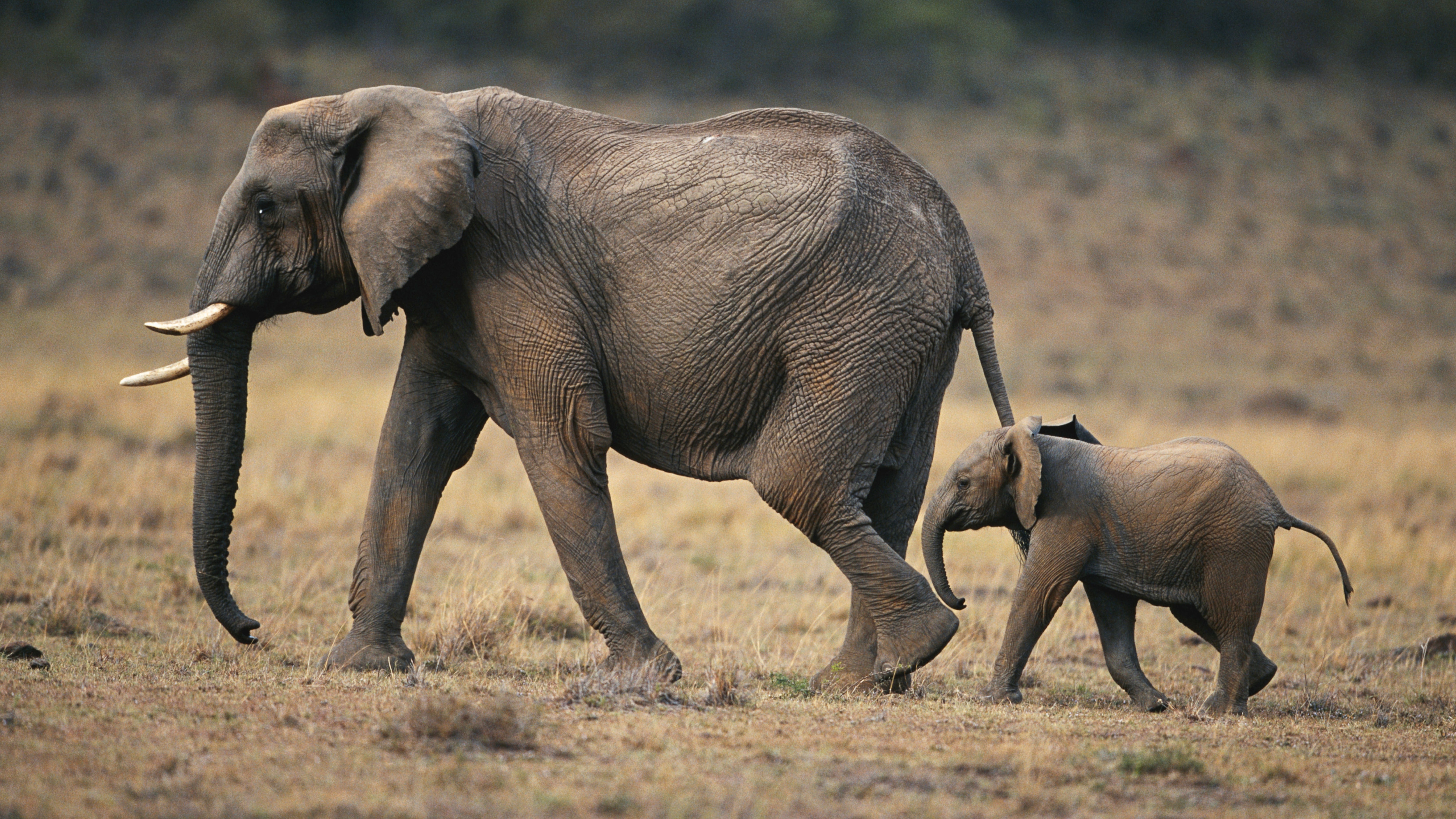
Elephants are the largest land mammals in the world, so it’s perhaps not surprising that they have the longest pregnancy of any living mammal: African elephants are pregnant for an average of 22 months, whilst for Asian elephants it’s 18 to 22 months.1 You might think such a long pregnancy is because of what huge creatures they are – but you’d only be partly correct. Baby elephants do develop slowly in the womb because of their physical size2 – but also because of the size of their intellect…
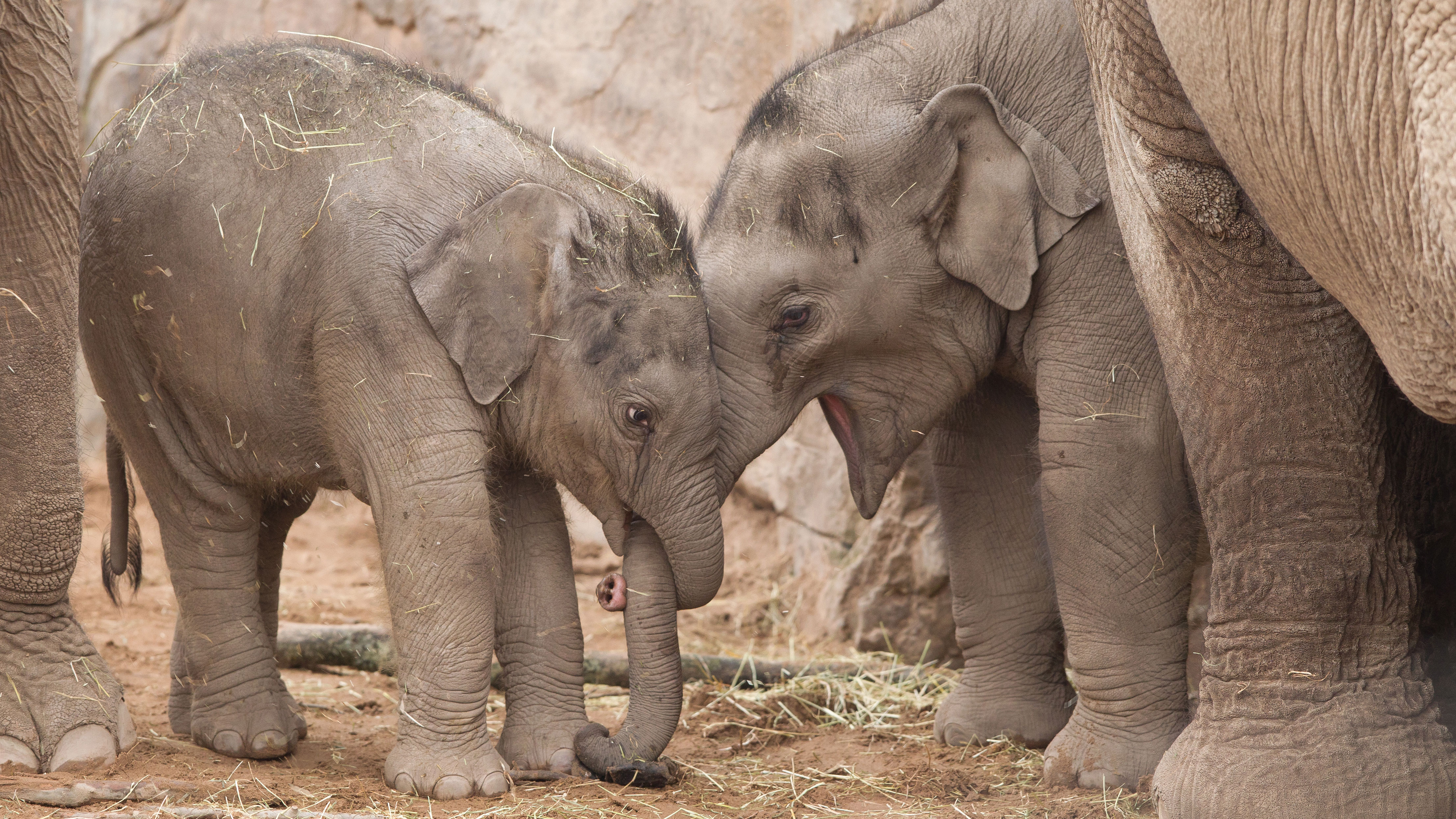
Elephants are highly intelligent mammals – they’re born this way, which takes time. They also have an impressive brain to show for it: it’s the largest of any land animal, with a structure similar to that of a human brain. However, it’s three times as large as ours, with three times as many neurons – 250 billion, in fact.3,4
They say, 'an elephant never forgets', and there’s actually some truth in that saying. Their temporal lobe region (the area responsible for memory) is exceptionally developed, with a greater number of folds, meaning it can store more information. It allows for retaining details that are vital for elephant survival, such as where to go to find food and water – and how to get there. The matriarch of a herd can lead family members to waterholes by calling up complex mental maps that cover hundreds of kilometres.5
Elephants rank alongside dolphins and chimpanzees in terms of levels of intelligence. They’re adept at problem-solving, from piling up blocks to reach food, to using branches and rocks as tools. Their trunks allow them to be dextrous beasts, using them to move and manipulate objects in much the same way that we would use our hands and arms.6
They’re one of very few species that understand what pointing means – for example, many dogs understand it, but chimpanzees do not. Elephants can also recognise themselves in a mirror – another rarity in the animal kingdom, as only the great apes, crows and bottlenose dolphins display the same levels of self-awareness. They demonstrate compassion, too; they help injured members of the herd and show grief when a family member dies. These gentle giants have even known to bury their dead, or cover them with leaves.
And if that wasn’t impressive enough for you, they’re also capable of imitating the sounds of other elephants and even some human words.7
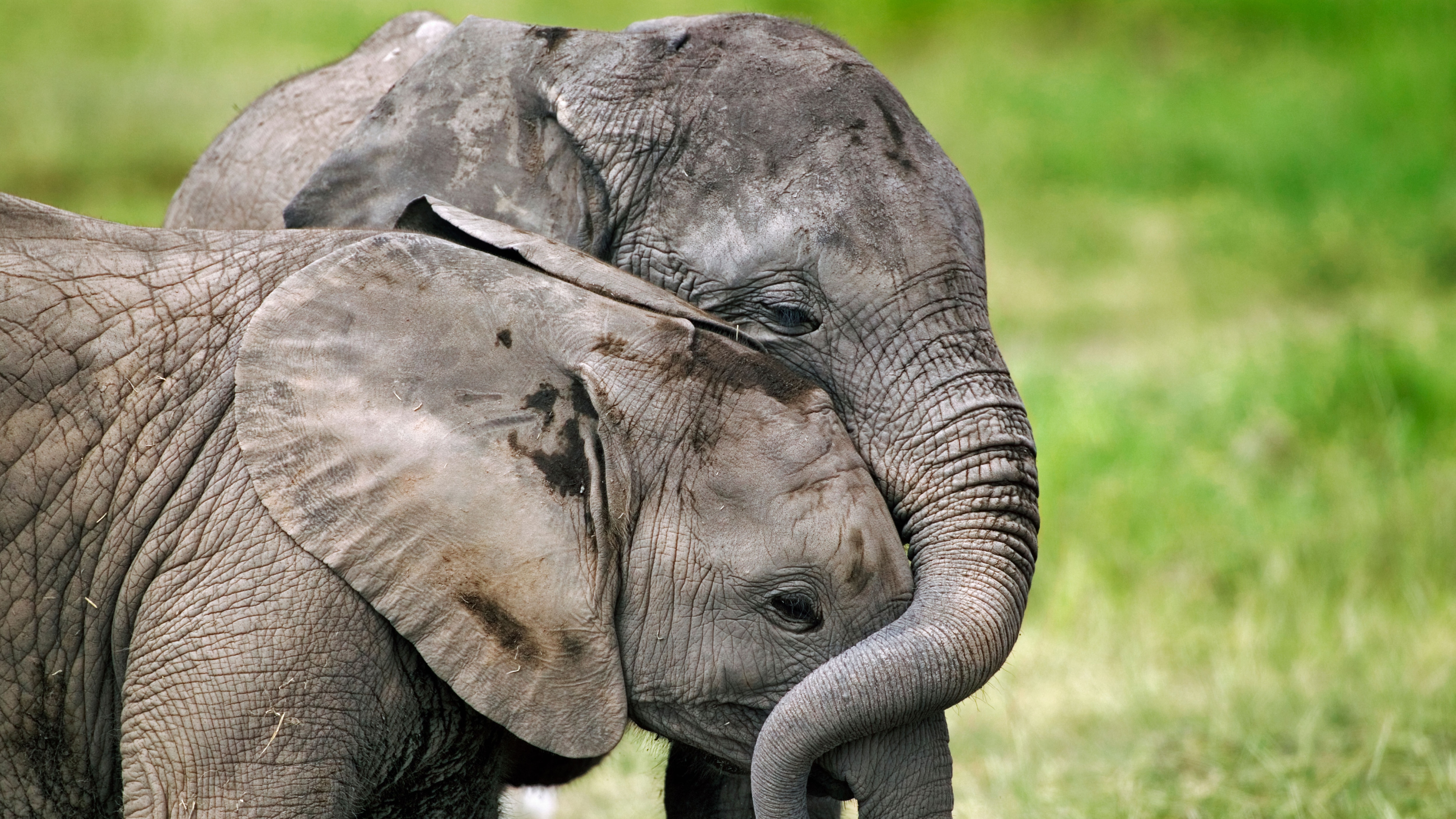
Worldwide, elephant populations are dwindling rapidly due to organised crime and the ivory trade. Today, populations remain stable and high in much of Southern Africa, but there’s a rising threat in the east, due to poaching.8 Savanna elephants are endangered and forest elephants are critically endangered – both appear on the International Union for Conservation of Nature (IUCN) Red List of Threatened Species.9
The problem of declining elephant populations is exacerbated by their reproduction cycles. They have a long gap between calves (4-5 years) and – unlike other animals – usually only have one baby at a time.10
Zoological breeding programs play an important role in elephant conservation, but adult male elephants who are reproductively active can behave unpredictably – and sometimes there are problems finding a suitable mate. Consequently, ‘assisted reproduction’ is sometimes required for successful breeding11 – and to do that, it’s important to understand elephant pregnancies.
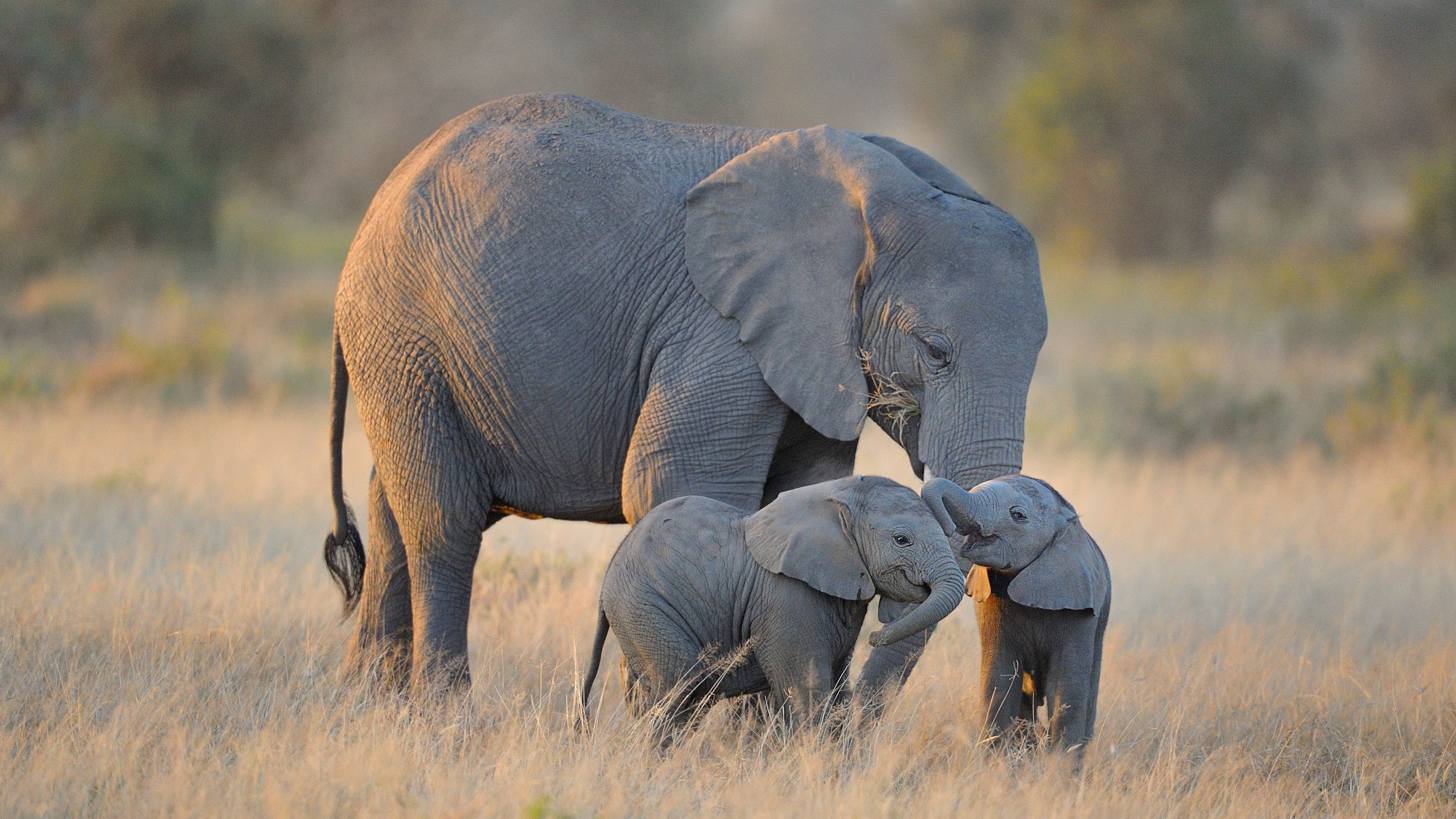
For some time, the process that creates such remarkably intelligent animals was something of a mystery. But advances in ultrasound technology over the last couple of decades has meant scientists have been able to take a closer look. One important piece of research was published in 2012, following the study of seventeen African and Asian elephants at zoos in the UK, Canada, the US, Australia, and Germany.12
Studies have found that the elephant has a unique cycle of ovulation and an extended pregnancy due to a hormonal mechanism not seen in any other species of animal. It’s triggered by two surges of the reproductive hormone LH (luteinising hormone), while the pregnancy is maintained by hormones secreted by several ovarian bodies known as corpus lutea. This knowledge of how the pregnancy is maintained is invaluable to conservation efforts, both in the wild and in zoos.13,14
If artificial insemination is to be carried out, it needs to take place after the second LH surge – but timing is important: there’s only a two to three-day window when ovulation occurs and fertilisation is likely. In order to be ready, scientists look out for the first LH surge, by checking hormone levels via weekly blood samples, or by measuring hormone metabolites excreted in urine and faeces.
Using artificial insemination helps increase the species’ gene pools, by matching two animals that can be many kilometres apart. This is key to survival: the more diverse the gene pool, the healthier, and more stable the population becomes. It also means no animal has to be transported and so the female can stay with her herd, which is very important for elephants.15,16
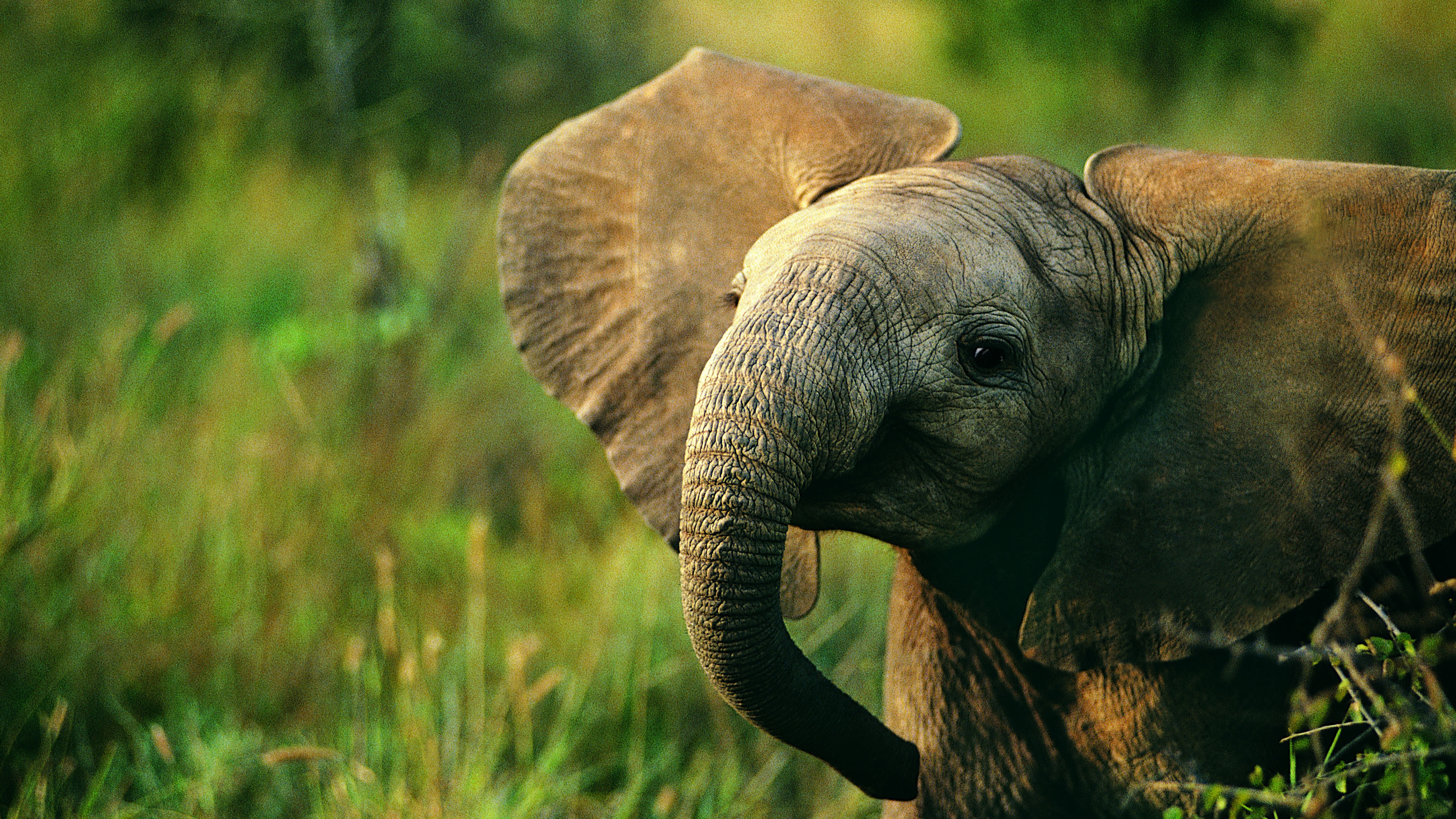
Of course, the story doesn’t end there.
When calves are born following the marathon pregnancy, they arrive on the scene with an advanced level of brain development. It’s used to recognise the structure of the matriarchal society around them and to help them feed themselves – they watch the adults and quickly learns which plants to eat and how to access them.
But they’re not alone. Other females help out with younger members of the herd and when on the move, the pace is adjusted to allow the calves to keep up.
But none of that would be possible were it not for the 680 days in the womb. The complex neural development that occurs during this period has given them a head start, allowing them to survive from day one of birth.17,18
Featured image © Karl Ammann
This article was originally published in August 2021.
1. Elephant Pregnancy Facts, 2. A Big Pregnancy for a Big Animal, 3. Elephant brain facts 1, 4. Elephant brain facts 2, 5. An Elephant Never Forgets, 6. The Intelligence of Elephants 1, 7. The Intelligence of Elephants 2, 8. Elephants Under Threat, 9. The IUCN Red List, 10. Elephant Reproduction Cycles, 11. Unpredictable Males, 12. 2012 Research, 13. The Unique Extended Pregnancy 1, 14. The Unique Extended Pregnancy 2, 15. Elephant Conservation Through Artificial Insemination, 16. Artificial Insemination of Elephants, 17. Early Days of a Calf 1, 18. Early Days of a Calf 2